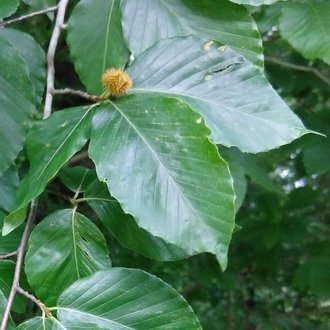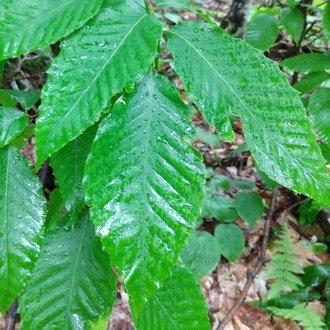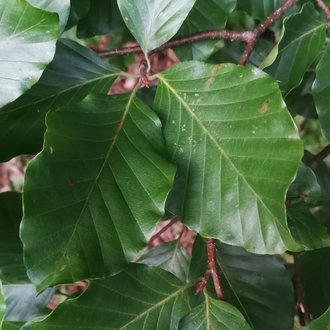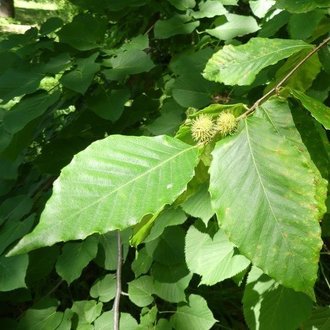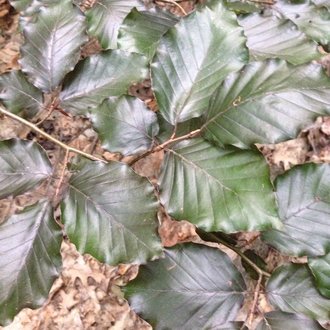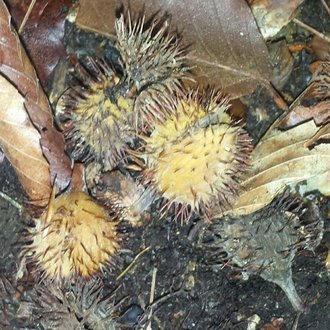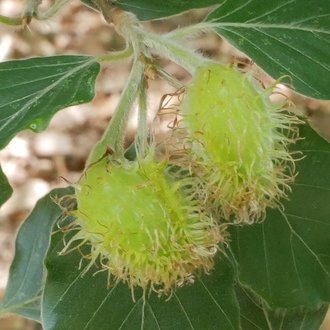American Beech vs European Beech
These similar species are easily distinguished by differences in leaves, as well as nuts.
American Beech (Fagus grandifolia) | European Beech (Fagus sylvatica) |
A shade-tolerant tree representing a climax species in hardwood forests of eastern North America. | Native to Europe; widely planted in North America and established in the wild in a few locations. |
Smaller nuts and larger leaves: nuts look small relative to leaves. Photo © guppin, Public Domain. | Larger nuts and shorter leaves: nuts look large relative to leaves. Photo © Marc Hermann, Public Domain. |
Longer leaves with gentle taper to a long point. Leaf margins distinctly serrated, with points where veins meet leaf margins. Photo © Quentin Groom, Public Domain. | Shorter, relatively broader, oval-shaped leaves with less of a distinct point at the tip. Leaf margins not serrated. Photo © Tobias Schönberg, Public Domain. |
No purple-leafed cultivars exist. During the growing season, foliage is always green. Photo © Christian Grenier, Public Domain. | Numerous cultivars exist; purple-leafed cultivars are widely planted, and their descendants sometimes revert to intermediate bronze-colored forms. Photo © mangoblatt, Public Domain. |
Spines on nut less likely to curve; sometimes entirely straight. Photo © Laura Gaudette, CC BY 4.0. | Spines on nut hulls often much more curvy or curled. Photo © Christian Kahle, Public Domain. |
References & External Resources
These short lists show only links helpful for ID. For a complete list of references and resources also covering other aspects of ecology, visit the links section of the full article on each plant, which is the first entry here.



